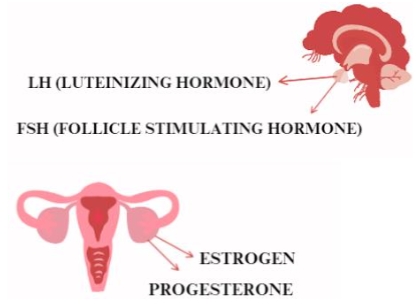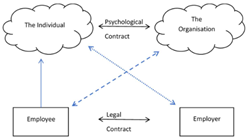An analysis of the relationship between self-consciousness and eating attitudes among 8th grade students
Abstract
This research investigates the relationship between eating attitudes and self-consciousness among 8th-grade students studying in the Kağıthane district of Istanbul during the 2023–2024 academic year. The study included a total of 568 students (300 males and 268 females). Participants were administered the Sociodemographic Form, Eating Attitudes Test (EAT-40), and the Self-Consciousness Scale. Data were analyzed using SPSS 27.0 software. Pearson correlation and multiple regression analysis were conducted to examine the predictive role of self-consciousness on eating attitudes. A positive relationship was found between “self-consciousness” and “eating attitude.” Independent sample t-tests and one-way ANOVA were used to compare groups based on sociodemographic variables. The eating attitudes score was significantly higher among female students compared to male students (t = −6.26; p < 0.001). Students with a family history of dieting had significantly higher eating attitude scores compared to those without (t = 4; p < 0.001). No significant differences were found based on screen usage during meals, meal procurement methods, meal companions, time spent at school, frequency of packaged food consumption, or parental restrictions on packaged foods. Self-consciousness scores were compared based on gender, diet history, household composition, number of siblings, meal companions, birth order, and parental restrictions on packaged foods. Female students had significantly higher scores in private self-consciousness (t = −3.96; p < 0.001), general self-consciousness (t = −9.37; p < 0.001), and social anxiety (t = −7.51; p < 0.001) compared to male students. Students with a diet history had significantly higher general self-consciousness scores (t = 2.39; p < 0.05) compared to those without. No significant differences were found in self-consciousness levels based on household composition, number of siblings, meal companions, birth order, or parental restrictions on packaged foods. For future scientific studies, the findings were discussed, and suggestions were provided.
References
American Psychiatric Association. (2013). Diagnostic and Statistical Manual of Mental Disorders, 5th ed. Arlington: American Psychiatric Publishing. https://doi.org/10.1176/appi.books.9780890425596
Allgood-Merten, B., Lewinsohn, P. M., & Hops, H. (1990). Sex differences and adolescent depression. Journal of Abnormal Psychology, 99(1), 55–63. https://doi.org/10.1037/0021-843x.99.1.55
Arıca, S. A. (2011). Eating Disorders in Adolescents (Turkish). Mustafa Kemal Üniversitesi Tıp Dergisi.
Aytın, N. (2014). Investigating the relationship between eating attitudes, problem solving tendencies and parental attachment in adolescents (Turkish) [Master’s thesis]. Adnan Menderes Üniversitesi.
Balantekin, K. N. (2019). The Influence of Parental Dieting Behavior on Child Dieting. The Influence of Parental Dieting Behavior on Child Dieting, 8(2), 137–144. https://doi.org/10.1007/s13679-019-00338-0
Blanchard, F. (1983). Two factors of restraint: Concern for dieting and weight fluctuation. Behaviour Research and Therapy, 259–267.
Büyüköztürk, Ş. K. (2021). In Büyüköztürk, Scientific research methods (Turkish). Ankara: Pegem.
Christie, D., & Viner, R. (2005). Adolescent development. BMJ, 330(7486), 301–304. https://doi.org/10.1136/bmj.330.7486.301
Cossrow, N., Pawaskar, M., Witt, E. A., et al. (2016). Estimating the Prevalence of Binge Eating Disorder in a Community Sample from the United States. The Journal of Clinical Psychiatry, 77(08), e968–e974. https://doi.org/10.4088/jcp.15m10059
Elkind, D., & Bowen, R. (1979). Imaginary audience behavior in children and adolescents. Developmental Psychology, 15(1), 38–44. https://doi.org/10.1037/0012-1649.15.1.38
Fenigstein, A., Scheier, M. F., & Buss, A. H. (1975). Public and private self-consciousness: Assessment and theory. Journal of Consulting and Clinical Psychology, 43(4), 522–527. https://doi.org/10.1037/h0076760
Figen & Çok, F. (1994). Developmental psychology: Adolescence and adulthood (Turkish). Ankara University Journal of Faculty of Educational Sciences, 27(2), 905–935.
Garris, C. (2018). Exploring Loneliness: The Effects of Self-consciousness and Other Intrapersonal Factors. University's Office of Research and Creative Activity (ORCA)
Gray, W. M., & Hudson, L. M. (1984). Formal operations and the imaginary audience. Developmental Psychology, 20(4), 619–627. https://doi.org/10.1037/0012-1649.20.4.619
Hamilton, J. C., Falconer, J. J., & Greenberg, M. D. (1992). The Relationship Between Self-Consciousness and Dietary Restraint. Journal of Social and Clinical Psychology, 11(2), 158–166. https://doi.org/10.1521/jscp.1992.11.2.158
He, J., Fu, Y., Cui, S., et al. (2023). Screen use while eating is associated with lower intuitive eating and higher disordered eating in Chinese adult men and women. International Journal of Eating Disorders, 56(10), 1961–1972. Portico. https://doi.org/10.1002/eat.24026
Ingram, R. E. (1990). Self-focused attention in clinical disorders: Review and a conceptual model. Psychological Bulletin, 107(2), 156–176. https://doi.org/10.1037/0033-2909.107.2.156
Jarvinen, D. W., & Nicholls, J. G. (1996). Adolescents’ social goals, beliefs about the causes of social success, and satisfaction in peer relations. Developmental Psychology, 32(3), 435–441. https://doi.org/10.1037/0012-1649.32.3.435
Jensen, M. L., Dillman Carpentier, F. R., Corvalán, C., et al. (2022). Television viewing and using screens while eating: Associations with dietary intake in children and adolescents. Appetite, 168, 105670. https://doi.org/10.1016/j.appet.2021.105670
Keel, P. K., & Forney, K. J. (2013). Psychosocial risk factors for eating disorders. International Journal of Eating Disorders, 46(5), 433–439. Portico. https://doi.org/10.1002/eat.22094
Larson, N., MacLehose, R., Fulkerson, J. A., et al. (2013). Eating Breakfast and Dinner Together as a Family: Associations with Sociodemographic Characteristics and Implications for Diet Quality and Weight Status. Journal of the Academy of Nutrition and Dietetics, 113(12), 1601–1609. https://doi.org/10.1016/j.jand.2013.08.011
Levine, M. P. (2013). Loneliness and Eating Disorders. (2013). Loneliness Updated, 260–274. https://doi.org/10.4324/9781315873367-25
Maes, M., Nelemans, S. A., Danneel, S., et al. (2019). Loneliness and social anxiety across childhood and adolescence: Multilevel meta-analyses of cross-sectional and longitudinal associations. Developmental Psychology, 55(7), 1548–1565. https://doi.org/10.1037/dev0000719
Micali, N., Ploubidis, G., De Stavola, B., et al. (2014). Frequency and Patterns of Eating Disorder Symptoms in Early Adolescence. Journal of Adolescent Health, 54(5), 574–581. https://doi.org/10.1016/j.jadohealth.2013.10.200
Millar, H. R., Wardell, F., Vyvyan, J. P., et al. (2005). Anorexia Nervosa Mortality in Northeast Scotland, 1965–1999. American Journal of Psychiatry, 162(4), 753–757. https://doi.org/10.1176/appi.ajp.162.4.753
Mülazım, Ç. (2012). The Role of gender, self-esteem, self-consciousness, and social self-efficacy on adolescent shyness [Master’s thesis]. Middle East Technical University.
Öyekçin, D. G. (2011). Approach to eating disorders (Turkish). Türkiye Aile Hekimliği Dergisi, 29–35.
Pearson, N., Biddle, S. J. H., & Gorely, T. (2009). Family correlates of breakfast consumption among children and adolescents. A systematic review. Appetite, 52(1), 1–7. https://doi.org/10.1016/j.appet.2008.08.006
Rosenberg, M., Schooler, C., & Schoenbach, C. (1989). Self-Esteem and Adolescent Problems: Modeling Reciprocal Effects. American Sociological Review, 54(6), 1004. https://doi.org/10.2307/2095720
Savasir, I. V. (1989). Anorexia Neurosis Symptoms Index (Turkish). Türk Psikoloji Dergisi, 7, 19–25.
Sawaoka, T., Barnes, R. D., Blomquist, K. K., et al. (2012). Social anxiety and self-consciousness in binge eating disorder: associations with eating disorder psychopathology. Comprehensive Psychiatry, 53(6), 740–745. https://doi.org/10.1016/j.comppsych.2011.10.003
Scheer, A. (2003). Understanding the Impact of Sexual Victimization and Public Self-Consciousness on Eating Disorders [Bachelor’s thesis]. Miami University.
Silén, Y., & Keski-Rahkonen, A. (2022). Worldwide prevalence of DSM-5 eating disorders among young people. Current Opinion in Psychiatry, 35(6), 362–371. https://doi.org/10.1097/yco.0000000000000818
Stein, J. A. (1986). He Relationship of Gender, Social Conformity, And Substance Use: A Longitudinal Study. Bulletin of the Society of Psychologists in Addictive Behaviors, 5(4), 125–138.
Striegel-Moore, R. H., Silberstein, L. R., & Rodin, J. (1993). The social self in bulimia nervosa: Public self-consciousness, social anxiety, and perceived fraudulence. Journal of Abnormal Psychology, 102(2), 297–303. https://doi.org/10.1037/0021-843x.102.2.297
Taumoepeau, M., & Reese, E. (2013). Understanding the Self Through Siblings: Self‐awareness Mediates the Sibling Effect on Social Understanding. Social Development, 23(1), 1–18. Portico. https://doi.org/10.1111/sode.12035
Word Health Organization. (2020). Adolescent data. Available online: https://www.who.int/. https://platform.who.int/data/maternal-newborn-child-adolescent-ageing/adolescent-data adresinden alındı (accessed on 5 March 2024).
Copyright (c) 2024 Safiye Övgü Karaarslan Çayirpunar, Özlem Özden Tunca

This work is licensed under a Creative Commons Attribution 4.0 International License.









